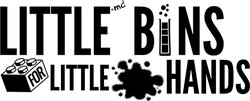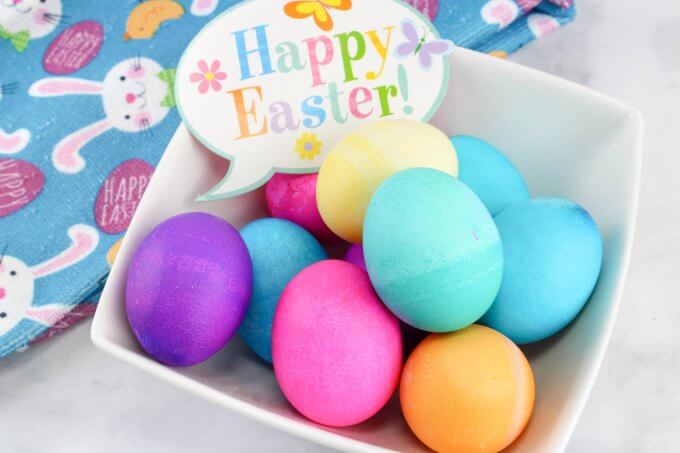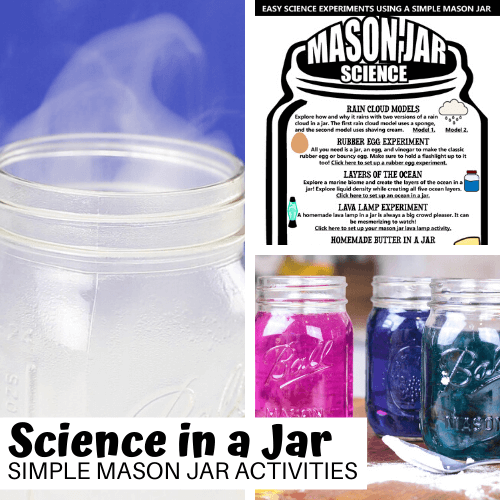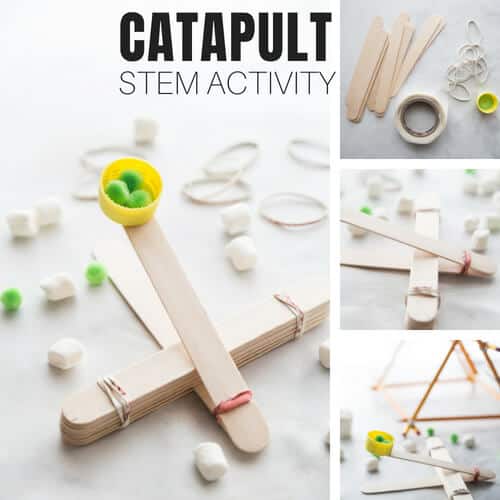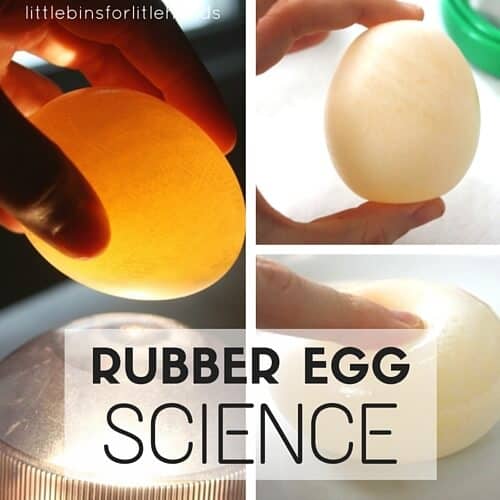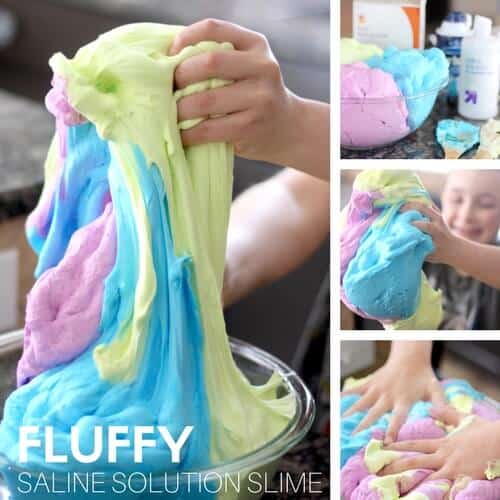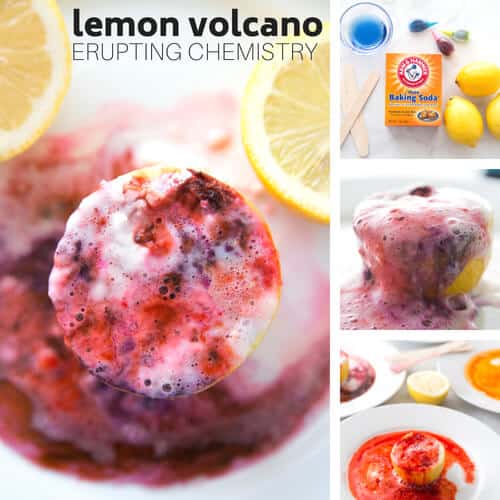Fizzy chemistry and coloring eggs combine for a super fun and easy to do Easter science activity. If you are looking to try a new egg coloring method this year and encourage some hands-on learning, you need to learn about dyeing Easter eggs with vinegar. We have added our own fun twist, baking soda, which incorporates a fun chemical reaction kids love! We love simple science activities for Easter.
Get ready to add this simple dyeing Easter egg activity to your science lesson plans this season. If you want to learn how to dye eggs with vinegar and baking soda, let’s get this experiment set up! While you’re at it, make sure to check out these other fun Easter science experiments and Easter crafts!
Can you dye eggs without vinegar? You betcha! Check out how to dye eggs with whipped cream.
How To Dye Easter Eggs With Vinegar
Let’s get right to making these gorgeous and colorful fizzy dyed Easter eggs. Head to the kitchen, open the fridge and grab the eggs, food coloring, baking soda, and vinegar. Make sure to have a good work space prepared and paper towels!
Want more ways to color Easter Eggs? Check out 6 easy ways to dye eggs!
Supplies:
- Hard boiled Eggs
- White Vinegar
- Baking Soda
- Food Coloring (Assorted Colors)
- Disposable Cups
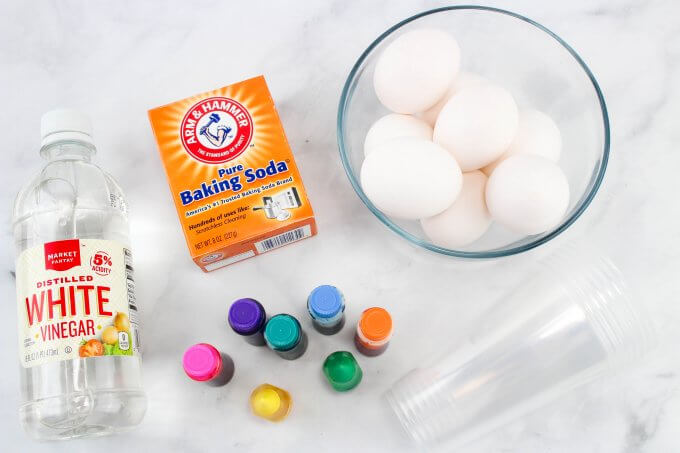
Instructions:
Make sure to check out our other science-inspired method for dying Easter eggs with our marbled eggs! Watch the video below!
STEP 1: Place ½ Tablespoon of baking soda into each cup. Add 5-6 drops of food coloring to each cup and mix with a spoon.

STEP 2: Place one hard boiled egg into each cup. Place cups on a sheet pan or 9×13 pan.
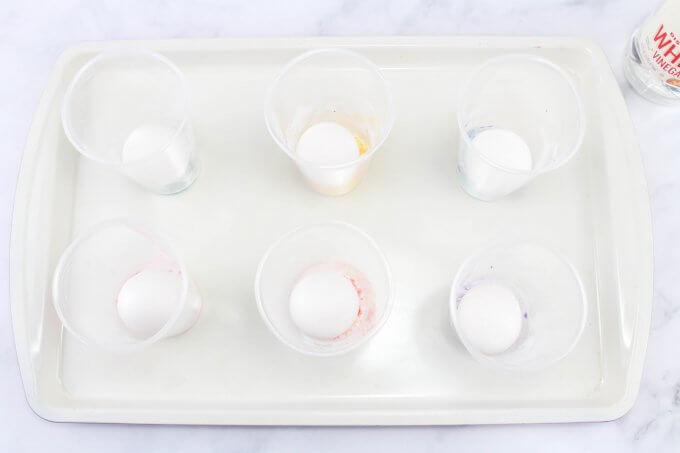
STEP 3: Pour 1/3 cup of vinegar into each cup and watch it bubble up! There might be some spillage so make sure the cups are on a pan. Add more vinegar if you want to watch it bubble up again. Have fun!
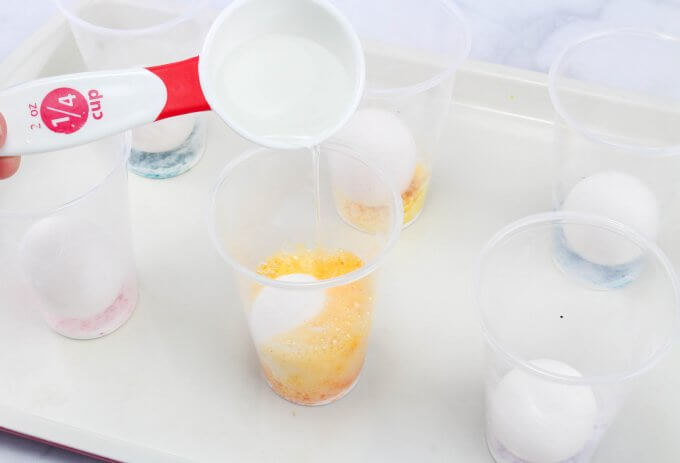
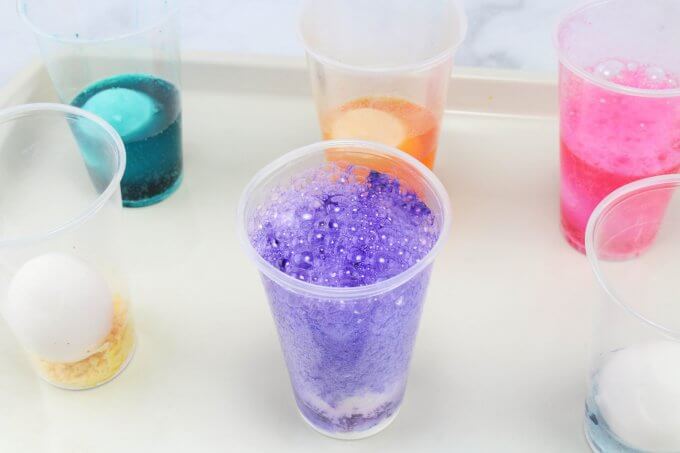
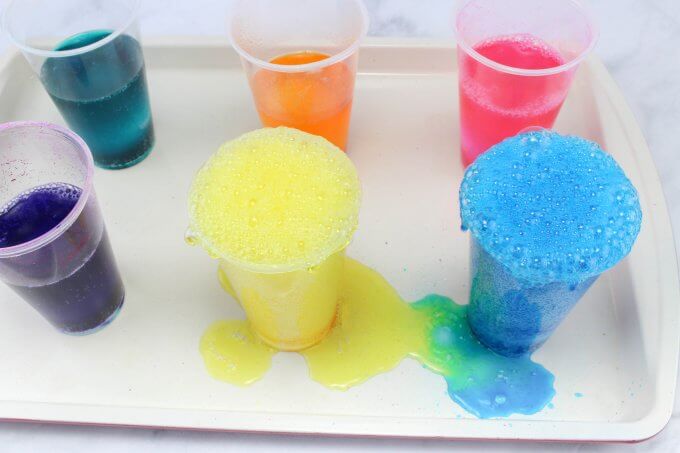
STEP 4: Let sit for 5-10 minutes, take out and set on paper towels to dry. The colors will be super vibrant and colorful!
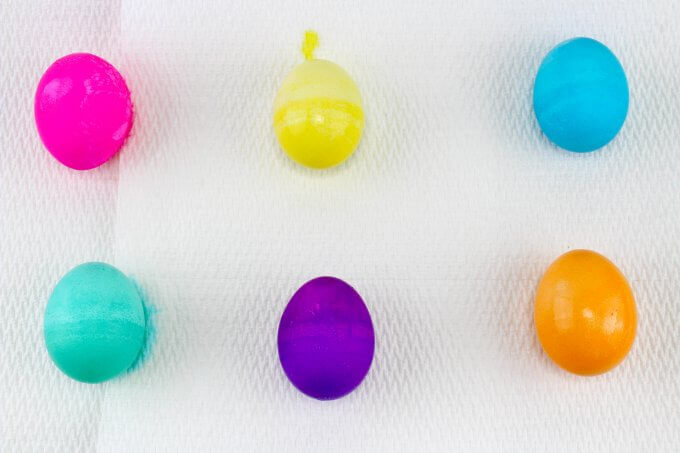
The Simple Science of Fizzy Dyed Eggs
Your good old food coloring from the grocery is an acid-base dye and the vinegar traditionally used to dye eggs helps the food coloring to bond to the eggshell.
When the baking soda and vinegar combine, you get a fun fizzy reaction. My son calls this an Easter volcano because these are the two traditional supplies used to create the classic volcano science experiment. Except for this time, we are using the chemical reaction between the acid and the base to dye our eggs.
The fizziness comes from a gas called carbon dioxide. When the baking soda and the vinegar combine, a chemical change occurs and a new substance is formed – the gas! You can see the gas in the form of bubbles and fizz. I bet if you put your hand close enough, you can feel the fizz too!
The gas pushes up in the cup which causes the volcano-like eruption every kid loves!
More Fun Easter Egg Activities
- Easter Oobleck
- Egg Launcher Ideas
- Easter Pop Art
- Easter Egg Zentangle
- Crystal Easter Eggs
- Paper Easter Eggs



Printable Easter Project Pack
- 20+ Easter science activities and STEM projects kids that are easy to set up and fit into the time you have available even if it’s limited!
- Printable Easter theme STEM activities that are simple but engaging for home or classroom. Perfect for K-2 and beyond but easily adaptable to many skill levels.
- Dive into simple background science explanations to share with kids while they explore hands-on and playful experiments, projects, and activities such as Easter oobleck, erupting eggs, regrowing lettuce, and more!
- Engaging Easter STEM activities pack with theme activities, journal pages, and design process steps! Learn about the design process and think like an engineer while you design and build a better Easter basket and more!
- Easy to gather supplies makes these STEM activities ideal when you have limited resources available. Specialty activities include a catapult and balloon rocket challenge pack with log sheets!
- Additional STEM activities: Include the great Easter egg tower, spaghetti, marshmallow challenge Easter theme, brick building ideas, puzzles, and screen-free coding activities.
INCLUDES:
- Easter STEM Pack
- PEEPS Theme STEM Pack
- Easter Slime Science Pack
